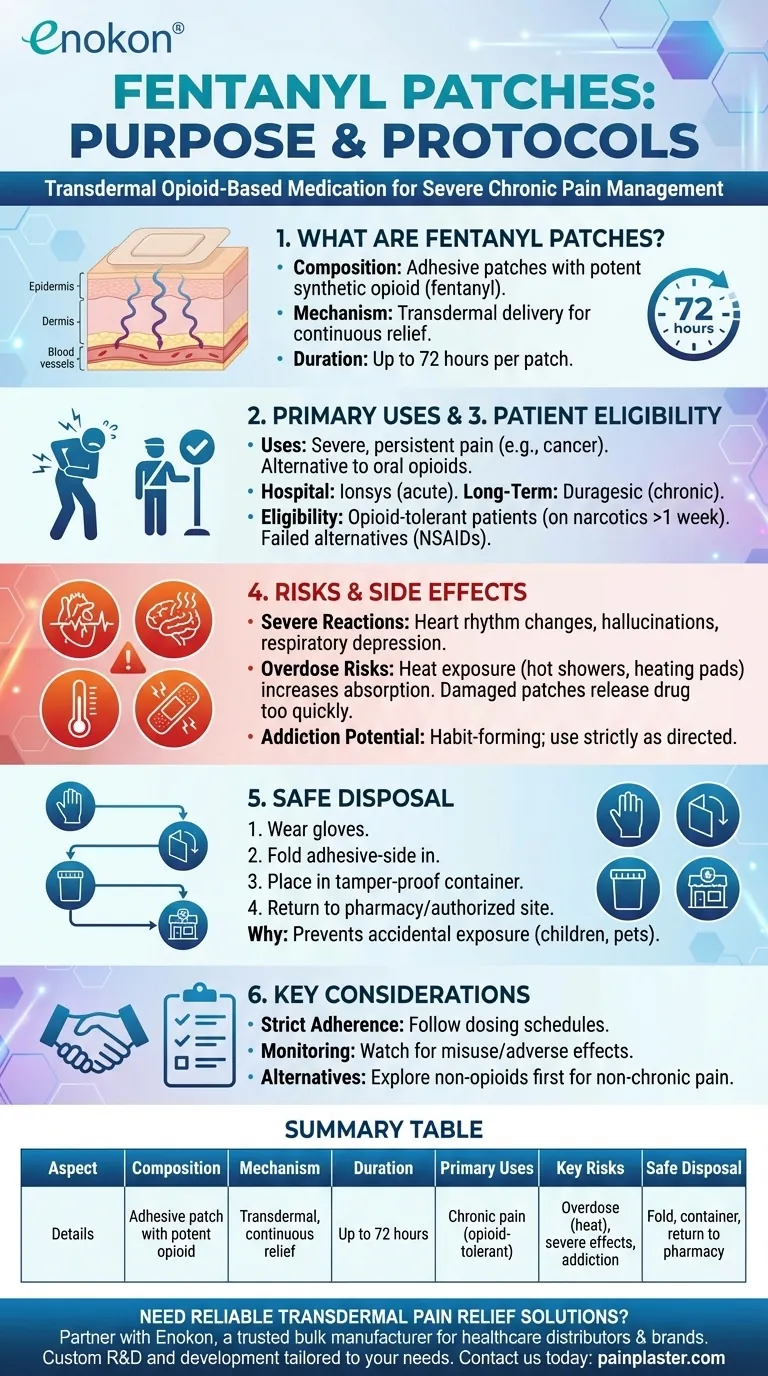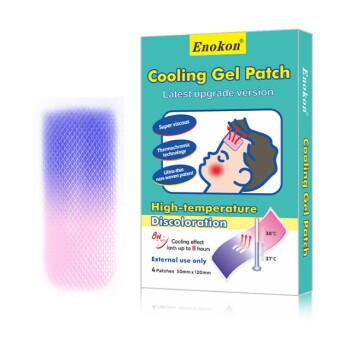Fentanyl patches are transdermal opioid-based medications designed to manage moderate to severe chronic pain in patients who are already tolerant to opioids. They provide sustained pain relief for up to 72 hours by delivering the drug through the skin. These patches are typically prescribed when other pain medications are ineffective, such as in cancer pain management, where they have shown comparable efficacy to oral morphine with fewer gastrointestinal side effects. However, they carry significant risks, including severe side effects and potential for overdose, especially if exposed to heat or damaged. Proper disposal is critical to prevent accidental exposure.

Key Points Explained:
1. What Are Fentanyl Patches?
- Composition: Fentanyl Patch are adhesive patches containing fentanyl, a potent synthetic opioid.
- Mechanism: They deliver the drug transdermally (through the skin) for continuous pain relief.
- Duration: A single patch can last up to 72 hours, making them suitable for long-term pain management.
2. Primary Uses
- Chronic Pain Management: Prescribed for patients with severe, persistent pain (e.g., cancer-related pain) who are already opioid-tolerant.
- Alternative to Oral Opioids: Studies show they are as effective as oral morphine but with fewer nausea/vomiting side effects.
-
Hospital vs. Long-Term Use:
- Ionsys: Used in hospitals for acute post-surgical pain.
- Duragesic: Designed for chronic pain over extended periods.
3. Patient Eligibility
- Opioid Tolerance: Only for patients who have been on regular narcotic pain medication for at least a week.
- Failed Alternatives: Typically prescribed when other medications (e.g., NSAIDs, weaker opioids) are ineffective.
4. Risks and Side Effects
- Severe Reactions: Includes heart rhythm changes, agitation, hallucinations, muscle stiffness, seizures, and respiratory depression.
-
Overdose Risks:
- Heat exposure (e.g., hot showers, heating pads) can increase fentanyl absorption, leading to fatal overdose.
- Damaged patches may release the drug too quickly.
- Addiction Potential: Habit-forming; must be used strictly as directed.
5. Safe Disposal
-
Steps:
- Wear gloves to avoid skin contact.
- Fold the patch adhesive-side in to trap residual drug.
- Place in a tamper-proof container (e.g., sharps disposal bin).
- Return to a pharmacy or authorized disposal site.
- Why It Matters: Prevents accidental exposure to children, pets, or others.
6. Key Considerations for Prescribers and Patients
- Strict Adherence: Must follow dosing schedules to avoid withdrawal or overdose.
- Monitoring: Watch for signs of misuse or adverse effects.
- Alternatives: Non-opioid options should be explored first for non-chronic pain.
Fentanyl patches represent a critical tool for pain management in specific, high-need cases, but their potency demands rigorous safety protocols. For patients and caregivers, understanding their proper use and risks is as vital as the relief they provide.
Summary Table:
| Aspect | Details |
|---|---|
| Composition | Adhesive patches containing fentanyl, a potent synthetic opioid. |
| Mechanism | Delivers medication transdermally for continuous pain relief. |
| Duration | Up to 72 hours per patch. |
| Primary Uses | Chronic pain management (e.g., cancer pain) for opioid-tolerant patients. |
| Key Risks | Overdose (heat exposure), severe side effects, addiction potential. |
| Safe Disposal | Fold adhesive-side in, use tamper-proof container, return to pharmacy. |
Need reliable transdermal pain relief solutions? Partner with Enokon, a trusted bulk manufacturer of high-quality transdermal patches and pain plasters for healthcare distributors and brands. Our technical expertise ensures custom R&D and development tailored to your needs. Contact us today to discuss how we can support your pain management product line!
Visual Guide

Related Products
- Icy Hot Menthol Medicine Pain Relief Patch
- Menthol Gel Pain Relief Patch
- Far Infrared Deep Heat Relief Patches Medicated Pain Relief Patches
- Asthma Cough and Pain Relief Patch for Adults and Kids
- Prostate Pain Kidney Health Care Patch for Men
People Also Ask
- How does menthol in the patch work to relieve pain? Discover the Science Behind Fast-Acting Relief
- Is menthol topical safe during pregnancy and breastfeeding? Key Safety Insights
- What are common side effects of menthol patch? Key Risks & Safety Tips
- How does menthol work in the Reliever Patch? Dual-Action Pain Relief Explained
- Are cooling patches reusable? Understanding Single-Use Cooling Solutions

















